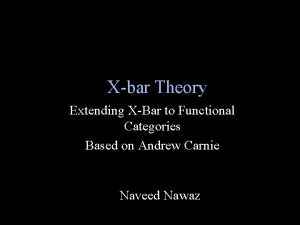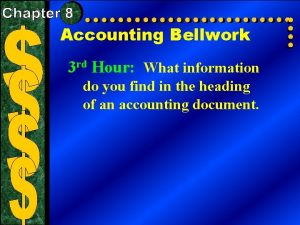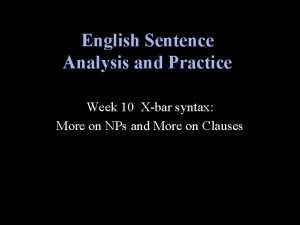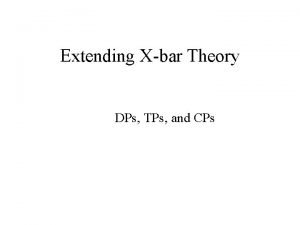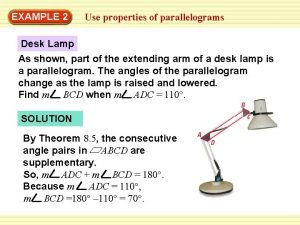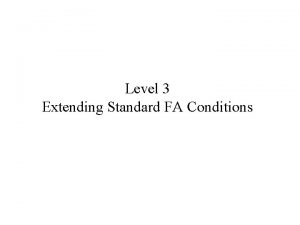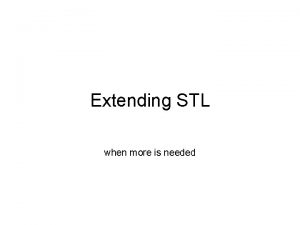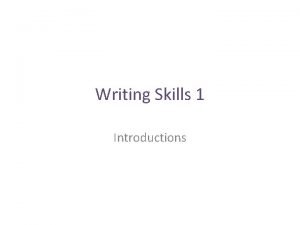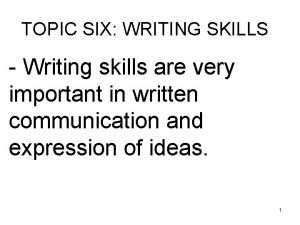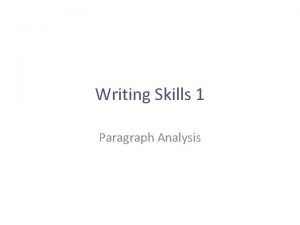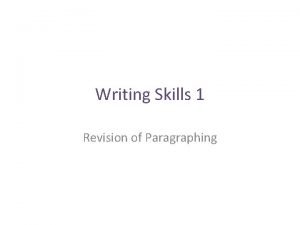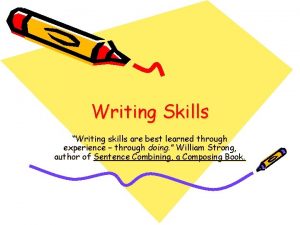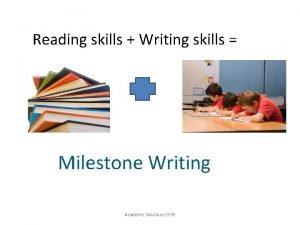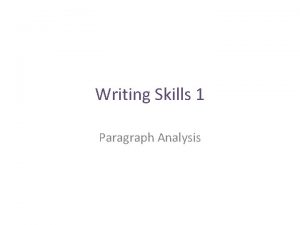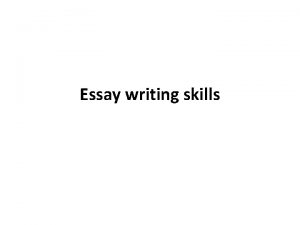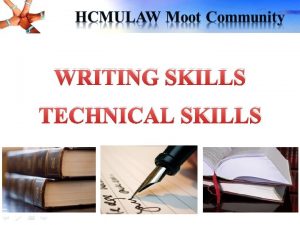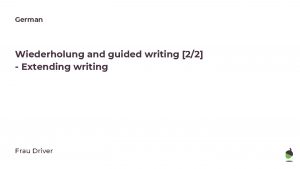Extending Writing Skills 1 Extending Writing Skills Today























- Slides: 23

Extending Writing Skills 1

Extending Writing Skills Today we will be looking at. . . • • Review of last session Handwriting The writing process Responding to learner writing 2

Review of last session • What are some of the reasons why learners want or need to write? • What are the kinds of writing they do? • Why do learners commonly say they do not write? • How would you get started? 3

Review of last session • What skills and knowledge do we need in order to write? • What kinds of things can we do to stimulate ideas for writing? Encourage your learner to read their work back to you. 4

Handwriting The quick brown fox jumped over the lazy dog. Write with your least dominant hand 5

Handwriting Are good handwriting skills still important? Are there still situations where handwriting is still necessary or preferred? 6

Handwriting What are the basic requirements for learners who wish to improve handwriting skills? 7

Suggestions for developing handwriting skills. . . • Comfortable seating and correct sitting position, especially if left handed • Select proper pens/pencils. • Doodle letter patterns. • Use tracing paper. • Teach difference between print/joined. • Teach upper/lower case. 8

Points to note on Handwriting. . • Work on handwriting should arise from learner’s expressed interest • Stress that improvement comes with practice. Keep a diary, shopping list, messages • Encourage breaks as pain in arm and hand are common • Concentrate on the basics 9

Points to note on handwriting. . . • Many learners have had negative experiences such as refused cheque. • Some learners may have been forced to write with right hand. 10

The Writing Process o Brainstorm topic & ideas - discussion o Write first draft o Read over draft o Re-write draft o Edit o Re-write or re-arrange o Proofread o Final Copy o Celebrate 11

Stimulating Ideas for Writing Write about hobbies & interests. Write about a favourite song or poem. Plan an outing or a holiday. Write a children’s story book. Use stimulus materials: pictures/objects – digital camera • Provide models of different kinds of writing – formal and informal. • • • 12

More ideas for getting started. . . • • • Name and address Addressing envelopes Days of the week, dates, months Writing numbers Writing grocery lists Keep a diary, appointments 13

The Writing Process Pre-Writing Brainstorm topic & ideas Talk about ideas. Collect materials such as magazines, newspapers, photos etc. Begin with your learner’s interests. Discuss, draw a web diagram, list ideas. 14

The Writing Process Planning & Writing the First Draft Decide with learner: • What to write: letter, card, story, diary • Who is going to read it? • Consider the style, tone, layout. • Provide a dictionary. Ensure learner is familiar with how to use. 15

Edit the piece of writing • • • Read over with learner. Add new vocabulary. Rearrange sentences. Add describing words. Brainstorm for new ideas. Check spelling, grammar, punctuation. Be sure to include learner in the process What can you do to improve this piece of writing? 16

The Writing Process Proofread • Check for spelling, grammar, and punctuation. Do not aim for perfection. . . 17

The Writing Process Celebrate • Encourage learner to share piece with family/group. • Display on classroom wall. • Type piece. • Keep a book of learner writing pieces or share in a newsletter. 18

Writing Prompt It was a dark and stormy night. . . 19

When studying a piece of writing. . . Ask • Is the writer able to spell simple words? • Is it easy to follow the sequence of ideas? • Does the writer have an understanding of sentence structure, full stops, capitals. • Is the handwriting easy to read? • Are there errors such as spelling, omitting endings such as (s), (ed) etc. 20

Responding to Learner Writing • What aspects do you feel need attention? • What aspect(s) would you suggest working on first? 21

When studying a piece of writing. . . • Concentrate on getting the basics right. • Has communication occurred? 22

Responding to Learner Writing Do not try to fix everything Remember to respond positively! 23
 Today meeting or today's meeting
Today meeting or today's meeting Todays class
Todays class Proposal kickoff meeting agenda
Proposal kickoff meeting agenda Characteristic of fingerprint
Characteristic of fingerprint Today's lesson or today lesson
Today's lesson or today lesson Example of repitition
Example of repitition Xbar theory
Xbar theory Emerging proficient extending
Emerging proficient extending Extending surface area and volume
Extending surface area and volume Extending oblivious transfers efficiently
Extending oblivious transfers efficiently Codominant biology definition
Codominant biology definition Double bond extending conjugation
Double bond extending conjugation Uv spectra of dienes
Uv spectra of dienes Karyotype
Karyotype Chapter 7 extending mendelian genetics vocabulary practice
Chapter 7 extending mendelian genetics vocabulary practice A high point of land extending into water
A high point of land extending into water Problem 8-3 extending amounts across the work sheet
Problem 8-3 extending amounts across the work sheet Large land mass
Large land mass X bar theory in syntax exercises
X bar theory in syntax exercises An area of land largely enclosed by higher land
An area of land largely enclosed by higher land Extending x-bar theory
Extending x-bar theory Gmod lighting
Gmod lighting Color blindness punnett square
Color blindness punnett square Mendelian genetics vocabulary
Mendelian genetics vocabulary






